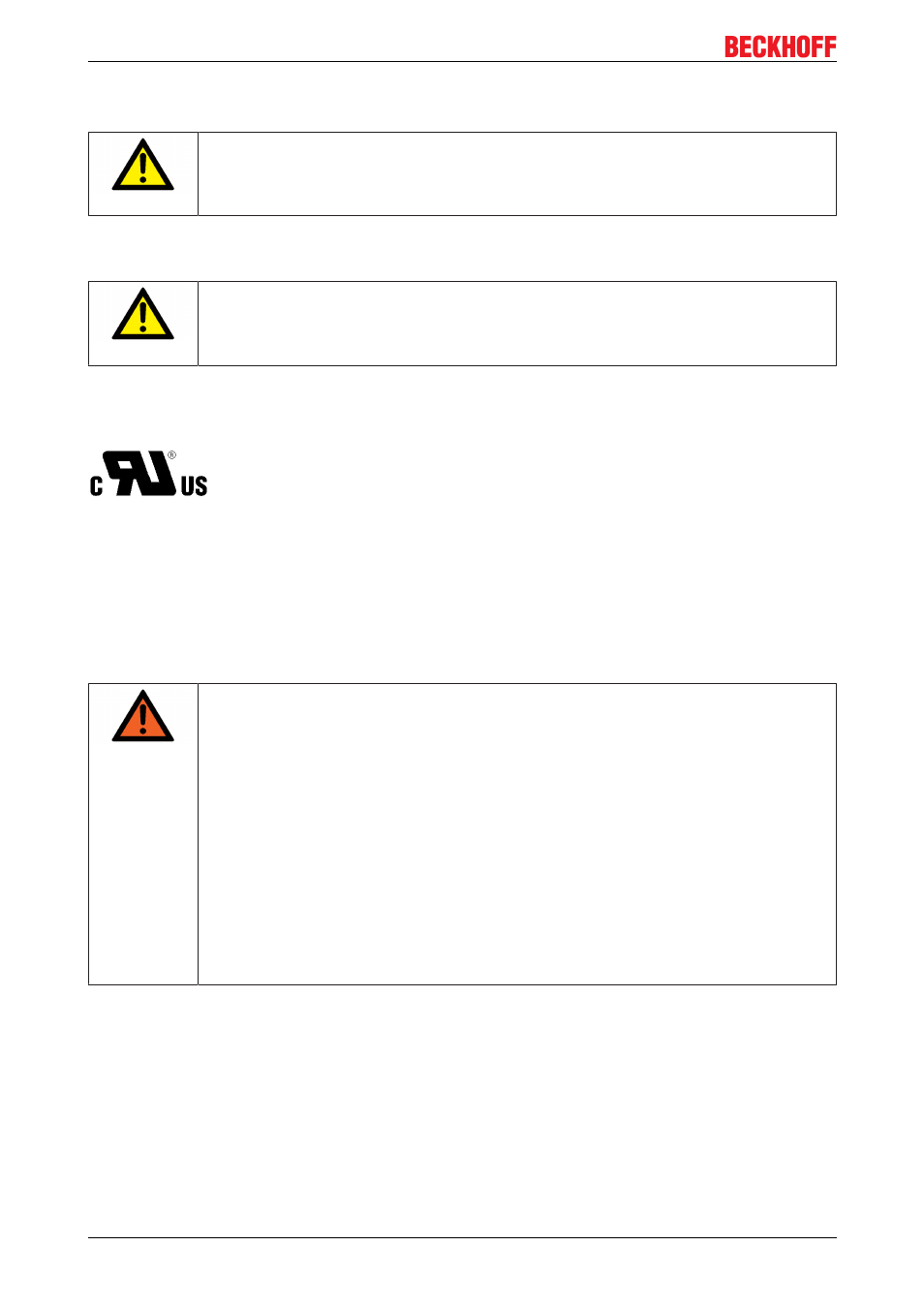5 atex notes, 1 atex - special conditions, Special conditions – BECKHOFF EP2xxx User Manual
Page 92: Atex ‐ special conditions, 92] for atex approved modules, 1 atex special conditions

Mounting and cabling
Networks
CAUTION
CAUTION!
To meet the UL requirements, EtherCAT Box Modules must not be connected to telecom
munication networks!
Ambient temperature range
CAUTION
CAUTION!
To meet the UL requirements, EtherCAT Box Modules has to be operated only at an ambi
ent temperature range of 0 to 55°C!
Marking for UL
All EtherCAT Box Modules certified by UL (Underwriters Laboratories) are marked with the following label.
Fig. 85: UL label
3.5
ATEX Notes
3.5.1
ATEX Special conditions
WARNING
Observe the special conditions for the intended use of EtherCAT Box mod
ules in potentially explosive areas – directive 94/9/EU.
• The certified components are to be installed in the BG2000‐0000 protection enclosure
93] that guarantees a protection against mechanical hazards!
• If the temperatures during rated operation are higher than 70°C at the feedin points of
cables, lines or pipes, or higher than 80°C at the wire branching points, then cables
must be selected whose temperature data correspond to the actual measured tempera
ture values!
• Observethe permissible ambient temperature range of 0 55°C for the use of EtherCAT
Box modules in potentially explosive areas!
• Measures must be taken to protect against the rated operating voltage being exceeded
by more than 40% due to shortterm interference voltages!
• The connections of the certified components may only be connected or disconnected if
the supply voltage has been switched off or if a nonexplosive atmosphere is ensured!
Standards
The fundamental health and safety requirements are fulfilled by compliance with the following standards:
• EN 600790: 2006
• EN 6007915: 2005
Marking
The EtherCAT Box modules certified for potentially explosive areas bear the following marking:
EP2xxx
92
Version 2.1.0